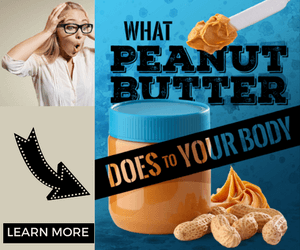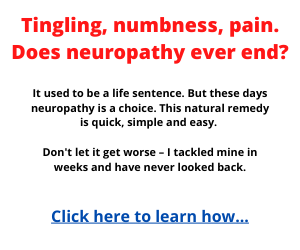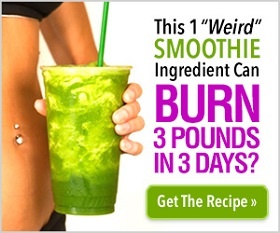Nutella without a doubt is a great tasting product and addictive. Yet, the more important question is whether this is a healthy product.
A follow-up question would be following.
Is Nutella a product that we want to feed our kids for breakfast on a regular basis?
Nutella ingredients list
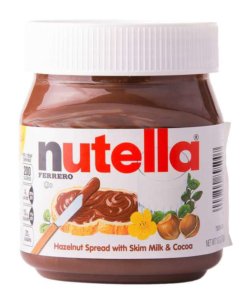
In fact, Nutella has about 55% of its content as sugar. So more than half of every serving you eat is pure sugar.
The United States Food and Drug Administration (FDA) requires that every packaged product list the ingredients. The label should give certain nutritional information.
A company should list the ingredients in “descending order of predominance by weight”. This rule was established by the FDA.
This means that the first ingredient listed is the most abundant ingredient. The second ingredient on the list is the second most abundant ingredient, and so on.
The current ingredients list for Nutella sold in the United States is:
- sugar;
- palm oil;
- hazelnuts;
- cocoa;
- skim milk;
- reduced minerals whey (milk);
- lecithin as emulsifier (soy);
- vanillin (an artificial flavor).
Sugar
Sugar is the most abundant ingredient in Nutella.
There is another important note about the amount of sugar in Nutella. About 75% of the sugar used comes from beets (depending on geography), not sugar cane. It is likely that this sugar will come from genetically modified beets.
Thus, in most locations, Nutella would be a genetically modified food. But it is near impossible to determine if the Nutella on your store shelf has the GMO sugar or not. If you are trying to avoid eating GMO foods, Nutella is not an option.
There is a lot of fuss about Nutella glycemic index being 33, a relatively low glycemic index. In fact, the copious amounts of sugar in Nutella are mixed with so much fat that the fat brings down the glycemic index.
However, keep this in mind when you read articles that tout the low GI. A Snicker's bar has about the same GI.
Palm oil
Palm oil is the second most abundant ingredient in Nutella.
Then, there is considerable fat in each serving. To be exact, there are 11 grams of fat in every two tablespoon servings. The saturated fat accounts for 3.5 grams of the total fat.
Even though it is quite a lot, the amount of fat is not the most important fact to know about the oil found in each serving. It is more important to know that the palm oil found in Nutella is highly processed.
The oil is raised to extremely high temperatures to “deodorize”. It makes the oil more stable to prolong shelf life. At the same time, it keeps the ingredients from separating out as it sits on the shelf.
This process strips the palm oil of its natural nutrients. They are tocotrienol, beta carotene, CoQ10, vitamin K, and lycopene. Tocotrienol is a potent form of Vitamin E.
After going through this process, the palm oil has an artificial chemical structure. This chemical structure interferes with important biological processes in the body.
It raises blood sugar and increases insulin resistance. It also increases cholesterol and heart disease (Center for Science in the Public Interest). In fact, modified palm oil is as bad for your health as trans-fat (World Health Organization).
The oil also undergoes a process called “fractionation”. This process separates out the liquid part (olein) from the solid part (stearin). These two parts are then mixed together in ratios that makes Nutella more spreadable.
Dr. Freedhoff puts things in perspective
Dr. Yoni Freedhoff is a professor and physician at the University of Ottawa. He is the medical director of the Bariatric Medical Institute. Dr. Freedhoff is a leading expert on obesity. Dr. Freedhoff has spoken out emphatically about how unhealthy he deems Nutella to be.
In doing so, he has put together a video to give you a better mental image of what's actually in a serving of Nutella.
In the video, he puts the separate ingredients of Nutella on a piece of toast. At the end, he opens up several packets of sugar to prove how much sugar is in one serving of Nutella. Then, to get the same amount of sugar in one serving, he stacks FIVE Oreo cookies on top of a piece of toast.
You can watch Dr. Freedhoff's video below.
To account for the American serving size of two tablespoons, he should have put TWICE as much sugar. In his video, he put the amount for ONE tablespoon. This latter is the serving size listed on the Canadian version of Nutella.
So, when you watch that video as an American, double the packets of sugar Dr. Freedhoff uses.
A closer look at serving size
Food companies use a sneaky thing to make their product look healthier (or not as unhealthy). They change the serving size listed on the nutrition label. By doing so, they can list less of an unhealthy ingredient per serving, like sugar and saturated fat.
Food manufacturers used this trick to list crackers, cookies, or cereals as “zero trans-fat”. They would reduce the serving size until the number of grams of trans-fat fell below 1 gram. Then, they could legally print “zero grams of trans fat per serving” on the box.
But, the serving size was often so small that nobody would eat such a small quantity as a single serving.
Currently, the listed serving size in the USA version of Nutella is two tablespoons or 37 grams. By using a serving size smaller than most people eat, they have low amounts of sugar and fat on the label.
Then, it doesn't look outlandish. And any parent would consider feeding their child Nutella for breakfast. Keep in mind too, in other countries, the serving size listed for Nutella is only ONE tablespoon.
To put this in better perspective, take a look at a tablespoon in a measuring spoon set. Measure out a LEVEL tablespoon, not a heaping tablespoon, or a rounded tablespoon. You can use a butter knife to scrape across the top to make it level.
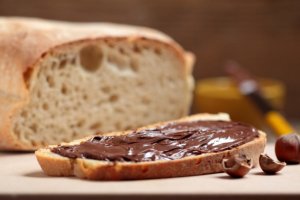
It is easy to get 50% to 100% more by using a larger tablespoon than a true tablespoon and/or a rounded tablespoon.
So, it's not the equivalent of 5 Oreo cookies that you have on your toast. It is the equivalent of 7 to 10 Oreos. This represents 30 to 42 grams of sugar. Instead of eating 11 grams of fat (3.5 grams of saturated fat), you could be eating 16 to 22 grams of fat.
Always be wary of serving size!
What a little detective work reveals
Ferrero is the Italian company that makes Nutella. They have changed Nutella's ingredients in different countries, especially in the United States. They operate these changes over time.
Ferrero has also changed its marketing strategy. This was in response to criticisms about its often misleading marketing message. The marketing message portrayed Nutella as a healthy product.
Many commercials in the US stated: “Nutella is made with simple quality ingredients like hazelnuts, skim milk, and a hint of cocoa”.
Of course, they failed to mention that more than half of the product was pure sugar. Moreover, the second most abundant ingredient was fat.
They also gave “an example of a tasty yet balanced breakfast”. This breakfast was Nutella spread on whole wheat bread, a glass of skim milk, and a glass of orange juice. Honestly, this wouldn't even be a balanced breakfast if you left off the Nutella.
When the product or its marketing change, it is difficult to find the various iterations.
To help us, we will use the Wayback Machine. It is an Internet site that takes snapshots of websites at various times in history and archives them.
It is possible to determine what has changed. And how the company reacted to pressures from consumers and lawsuits, over time.
We concentrated on the USA version of the product. We were able to identify changes made to the nutellausa.com website.
From 2000 to 2006
For a long time, the USA version of Nutella contained trans-fat. More specifically, it was trans-fat from partially hydrogenated peanut oil.
On April 6, 2001, the company listed peanut oil and partially hydrogenated peanut oil as fats. NOT palm oil.
Furthermore, they listed the following question and answer in their frequently asked questions.
“Nutella contains peanut oil and I'm allergic to peanuts.”
“The peanut oil that Nutella contains goes through a hot-solvent extraction process which takes out all the proteins and you are left with pure peanut oil which is generally non-allergenic. Only oil prepared by the hot solvent extraction process that is commonly used in the United States is known to be free of protein. But, of course, please consult your doctor about any health concerns you may have.”
In other words, it was highly processed and contained loads of trans-fats. Furthermore, there was little to none of the original nutrients of the raw peanut oil left in it. It was an industrial product that should not be in the human body.
The website graphics displayed soccer kids happily eating Nutella spread on various breakfast items. The website also featured several animated graphics. These graphics were showing loads of hazelnuts pouring into a jar of Nutella.
The issue of sugar and fat were not addressed at all!
The marketing was misleading to say the least.
From 2007 to 2009
In 2007, the company changed the “Nutritional Information” tab on their navigation menu. It became “Delicious Fact”. The change occurred between April 8 and May 9.
They no longer disclosed the ingredients of Nutella on their website. The company stopped showing a picture of their nutritional information panel.
At the same time, they added this question and the corresponding answer to their FAQ.
“I like to eat Nutella out of the jar with a spoon. Is that OK?“
“While we agree that the creamy, chocolaty, hazelnut taste of Nutella is delicious all by itself, we suggest not to “double dip,” as it reduces the shelf life of the product.”
In 2008, all the snapshots of the Nutella USA website showed no nutritional information. Many of the misleading marketing statements used in previous years were gone.
For example, this one below was missing. In fact it disappeared from their website in August-September, 2002.
“Tell me about the ingredients found in Nutella.“
“Nutella is made with over 50 hazelnuts in a 13 oz. jar. Most dieticians agree that nuts provide essential vitamins and minerals to the daily diet. Nutella contains 1½ cups skim milk in every 13 oz. jar. Not only is skim milk lower in fat than regular milk but it contains the same amount of calcium, protein and vitamins A & D to build strong bones. The cocoa in Nutella is naturally low in fat and just a touch of it gives Nutella its creamy, smooth chocolaty taste.”
The word “modified” as in “modified palm oil” did not escape consumers' attention. Thus, they added a FAQ question.
“Is the modified palm oil in Nutella hydrogenated?“
The answer they gave initially was the following.
“No. The modified palm oil is a mix of the liquid and solid oil naturally extracted from the fruit of the palm. The mix is adjusted to assure the best consistency for easy spreading. The process also reduces the level of saturated fat.”
From 2010 to 2016
In 2010, they changed this answer to this one.
“No. The palm oil is naturally extracted from the fruit of the palm. This palm oil is adjusted to assure the best consistency for easy spreading by reducing the level of saturated fat.”
The second answer softens the fact that it is highly processed.
Between January 8 and February 25, 2009, the company added a “Nutrition” link back to their navigational menu. They changed “modified palm oil” to “peanut oil and partially hydrogenated peanut oil”. So, they got rid of the word “hydrogenated” because people had caught on by then that it meant trans-fat. They were required to list trans-fat on the label if it contained more than 1 gram of hydrogenated oil.
Consumers have still not caught onto to the fact that “modified palm oil,” was as bad as trans-fat. It is highly processed which removes virtually almost all the nutrients from palm oil.

This campaign showed how helpful Nutella was to moms. It was so difficult to get kids to eat healthy foods and Nutella could get them to eat them.
They quoted research studies and what dietitians said about breakfast. They concluded with this sentence.
“After all, the ‘best' breakfast is the one that will be eaten!”
They added another question to their FAQ.
“How can Nutella help moms at breakfast time?“
The answer they gave was.
“It can be difficult to persuade children to eat breakfast. When used in moderation with complementary foods, Nutella® is a quick and easy tool to encourage kids to eat whole grains, such as whole wheat toast, English muffins, toaster waffles and bagels.”
“So why not use Nutella® hazelnut spread to turn a balanced breakfast into a tasty one!”
This sentence concluded the section on Nutella and Family.
Is Nutella healthier than peanut butter?
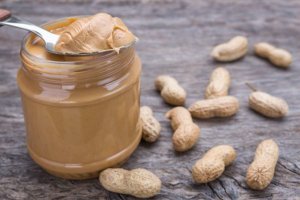
Product placement on the shelves of a grocery store is a large part of the bargaining. This bargaining takes place when companies grant distribution rights.
Nutella's marketing campaigns emphasize the hazelnuts. On their pictures, hazelnuts are poured into the jar. The marketing message portrays Nutella as a “hazelnut spread.”
People think of Nutella as a product that is just as healthy as peanut butter. Why? Because they see Nutella on the shelf right next to peanut butter. But, they are DEAD WRONG in making this assumption.
All natural peanut butter is 100% ground up peanuts, sometimes with a little salt added.
A jar of Adams (a product of Smucker) contains 8 grams of protein in two tablespoons. Adams is 100% natural peanut butter and made with peanuts as the only ingredient listed.
In Nutella's current formula, there are 3 grams of protein. It used to have only 2 grams per serving.
Sugar
The sugar in the natural peanut butter is the natural form of sugar. It is not added sugar. Moreover, there is only 1 gram of sugar in the natural peanut butter compared to 21 grams of sugar in Nutella.
That's right. There is TWENTY-ONE TIMES MORE SUGAR IN NUTELLA THAN NATURAL PEANUT BUTTER!!!
Jif and Skippy add sugar to their peanut butter. These less healthy brands have less than 12% of the sugar put in Nutella.
Natural peanut butter also has a lot more fiber than Nutella per serving.
Fat
The fat content in natural peanut butter is a little higher than Nutella. But we're comparing apples to oranges.
The fat content in natural peanut butter is about 30% less saturated fat than in Nutella. It is NOT modified and only minimally processed when the peanuts are ground up.
The fat in peanut butter still retains its natural nutrients in a bioavailable form. It does not interfere with normal biological processes such as the cell membrane permeability.
Vitamins and minerals
More than 30 essential vitamins, minerals and other micronutrients are in natural peanut butter. They exist in large quantities in natural peanut butter.
These include vitamin B1 (thiamine), vitamin B2 (riboflavin) vitamin B3 (niacin), vitamin B4 (choline), vitamin B5 (pantothenic acid), vitamin B7 (biotin), vitamin B9 (folate), vitamin E, iron, potassium, magnesium, calcium, manganese, phosphorus, copper, zinc, selenium, resveratrol, and p-coumaric acid.
It is also important to note that natural oils promote satiety. This means that it serves as an appetite suppressor, especially when there is little sugar in a meal.
But the large amount of sugar in Nutella combined with modified oils increase appetite.
Final conclusion
Is Nutella healthy and nutritious?
Well, it's about as nutritious as birthday cake icing or a melted candy bar. As a special treat on occasion, it would certainly fit the bill because most people do find it to be delicious.
But, serving it up as part of a regular school day or work day breakfast, it's definitely not the best choice!
After studying Nutella's ingredients, Dr. Freedhoff's concluded that it is a “spreadable candy“.
Thus, would you eat candy for breakfast or serve candy to your family for breakfast? If you are honest with yourself, you know the answer.
Give your child a smear of natural peanut butter on whole grain toast for breakfast. It is far healthier than a smear of Nutella!
For variety, you could also opt for other natural nut butters. You have almond butter or hazelnut butter.
You could add a bit of cocoa for chocolatey goodness. Or a drizzle of honey for sweetness. Even so, it would still be far healthier than Nutella.
Finally, why not make your own hazelnut spread?
There are quite a few options available online. I have selected this one below that needs only 3 ingredients: hazelnuts, maple syrup and raw cacao powder.
Enjoy!
